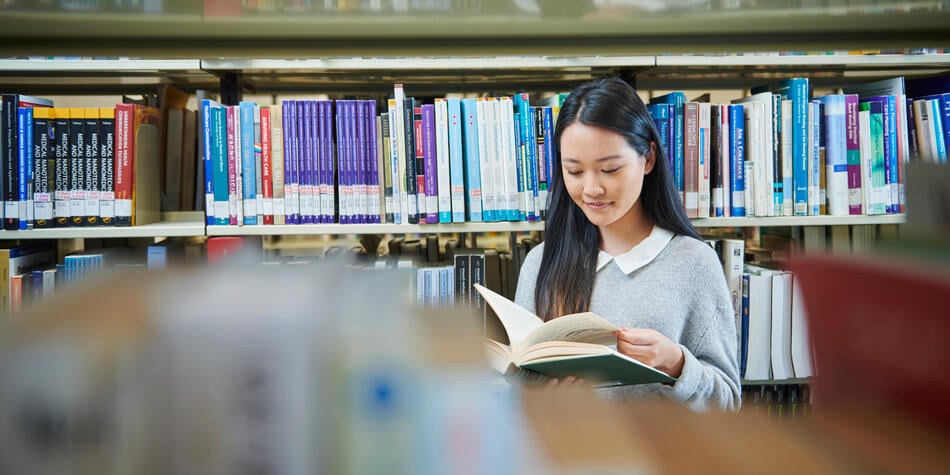Understanding our past is a vital part of building our future. If you're fascinated by stories, the career opportunities in cultural heritage are vast and rewarding.
Dr Steven Cooke, former course director for Deakin’s cultural heritage and museum studies program, has long been fascinated by the stories we tell about ourselves. Back in England, both his grandparents served in the armed forces during the Second World War, so he grew up hearing 'some really heroic stories about Britain at war. What I didn't hear were stories from my next-door neighbour – also in the forces – who liberated the concentration camp at Bergen Belsen in Germany. I became fascinated by the stories we choose to tell and those we don't.'
His interest led him to museum studies, where stories are preserved and shared. 'It's all about people and stories for me,' Dr Cooke says. 'And how (these) are shown through objects, collections, museums, heritage sites, cultural landscapes and through intangible cultural heritage like food and dance.'
The importance of preserving culture
The UNESCO Declaration on the Responsibilities of the Present Generations Towards Future Generations is unequivocal about our responsibility to 'identify, protect and safeguard' cultural heritage for future generations. Culture, it says, is linked to the 'fate of future generations'.
Dr Cooke wholeheartedly agrees. Here's why:
- Identity. 'Culture gives us a sense of identity, a sense of who we are and who we might be based on stories about the past.'
- Economics. 'Cultural heritage is often the basis for place promotion and tourism.'
- Social inclusion. 'More and more we’re thinking about how museum and other heritage places can create more inclusive stories about the past.'
The Melbourne Museum's Bunjilaka First Peoples exhibition is a prime example. It was co-curated by Indigenous communities and coordinated by a group of Elders who had control over the voices used within the exhibition.
A distinctive approach
Deakin's cultural heritage and museum studies program is the biggest and longest running of its kind in Australia.
'We have quite a distinctive approach,' Dr Cooke says. 'We want people to not only work in the sector but to innovate and take practice forward.' To achieve this level of excellence, students learn both theoretical and practical approaches from people with both academic and industry experience.
Dr Cooke leads by example, having spent a decade prior to joining Deakin working at some of Victoria's most important heritage sites – Como House and Garden, Old Melbourne Gaol, Polly Woodside and Shrine of Remembrance.
Staying relevant to industry
'We've got an advisory board that's made up of key people in the sector,' Dr Cooke says. 'People from Melbourne Museum, National Gallery of Victoria, National Trust, Heritage Victoria as well as independent consultants and current and former students. They advise us on what we teach and how we teach it, so it's relevant to industry.'
Staying connected to industry
'We've also got great connections with the sector,' Dr Cooke says. 'AMaGA Victoria helps us place students through the Victorian Collections Program (and) we've got an ongoing relationship with Port Arthur in Tasmania, so every two years we take a group of students down there (to) work with Port Arthur staff.'
'We have guest lecturers come in from industry and we do a lot of site visits as part of the on-campus program.'
Students are also encouraged to do a placement as part of the program, either within Australia or overseas. And the university works with students to help find those placements.
Mastering a dual award
An exciting opportunity for students is that Deakin now has a dual award program where selected students can study at both Deakin and Brandenburg University of Technology in Germany and graduate with both a Masters of Cultural Heritage from Deakin and a Masters of World Heritage from Brandenburg.
Top tips to help you through
If you're thinking about a museum career then a postgraduate qualification is the way to go. Here are our top tips for making the most of your museum studies masters:
- Speak to the current course director, Dr Virginie Rey, about what you want to do, where you want to go and how Deakin can help you. You can start by emailing chms@deakin.edu.au.
- Plan your studies. Postgrad is a big commitment with students often balancing work and family, so take advantage of Deakin's flexible online study options and make sure you can devote the time to your studies.
- Get involved. Volunteer in the sector to get some industry experience, make contacts and get a sense of what jobs are out there.
- Join AMaGA Victoria or Australia ICOMOS as a student member. They advertise jobs in the sector and also have good networking opportunities.
A vast and varied career
What Dr Cooke loves most about museum careers is the variety. He says every day is different – you never know what you're going to get. 'My first day at Como I caught a cow who'd escaped!'
'Deakin graduates have gone on to do amazing things,' he says. You'll find them as collections managers, curators, researchers, heritage officers, historic houses managers, museum and art gallery directors. They work for government agencies, community organisations and private industries. The opportunities are vast.
In a future-forward world it's easy to lose sight of what's gone before. But knowing our cultural heritage is vital to shaping who we are today – and who we can be tomorrow.
Looking to follow your interests towards a great career? Find out more about cultural heritage and museum studies at Deakin.

